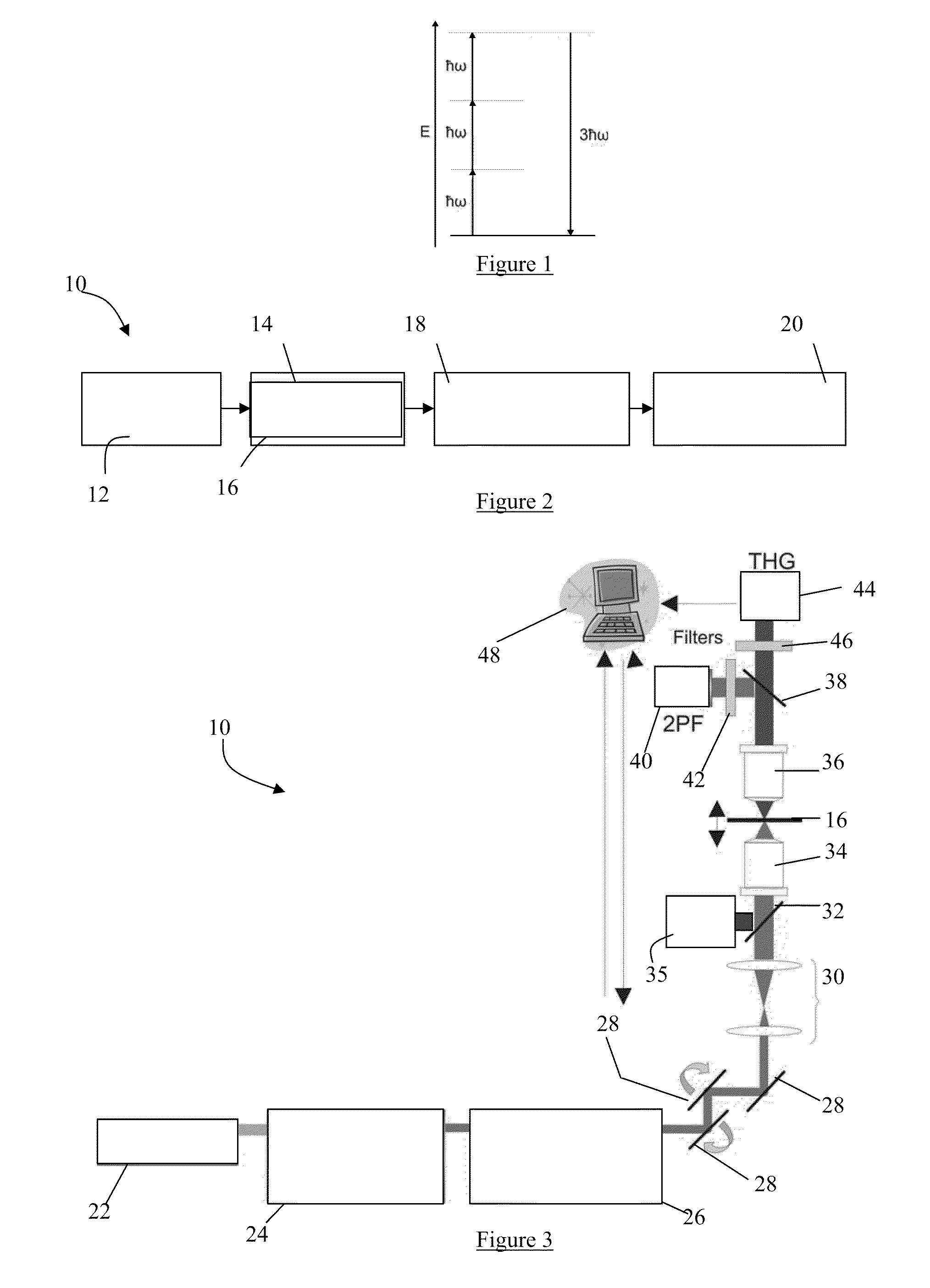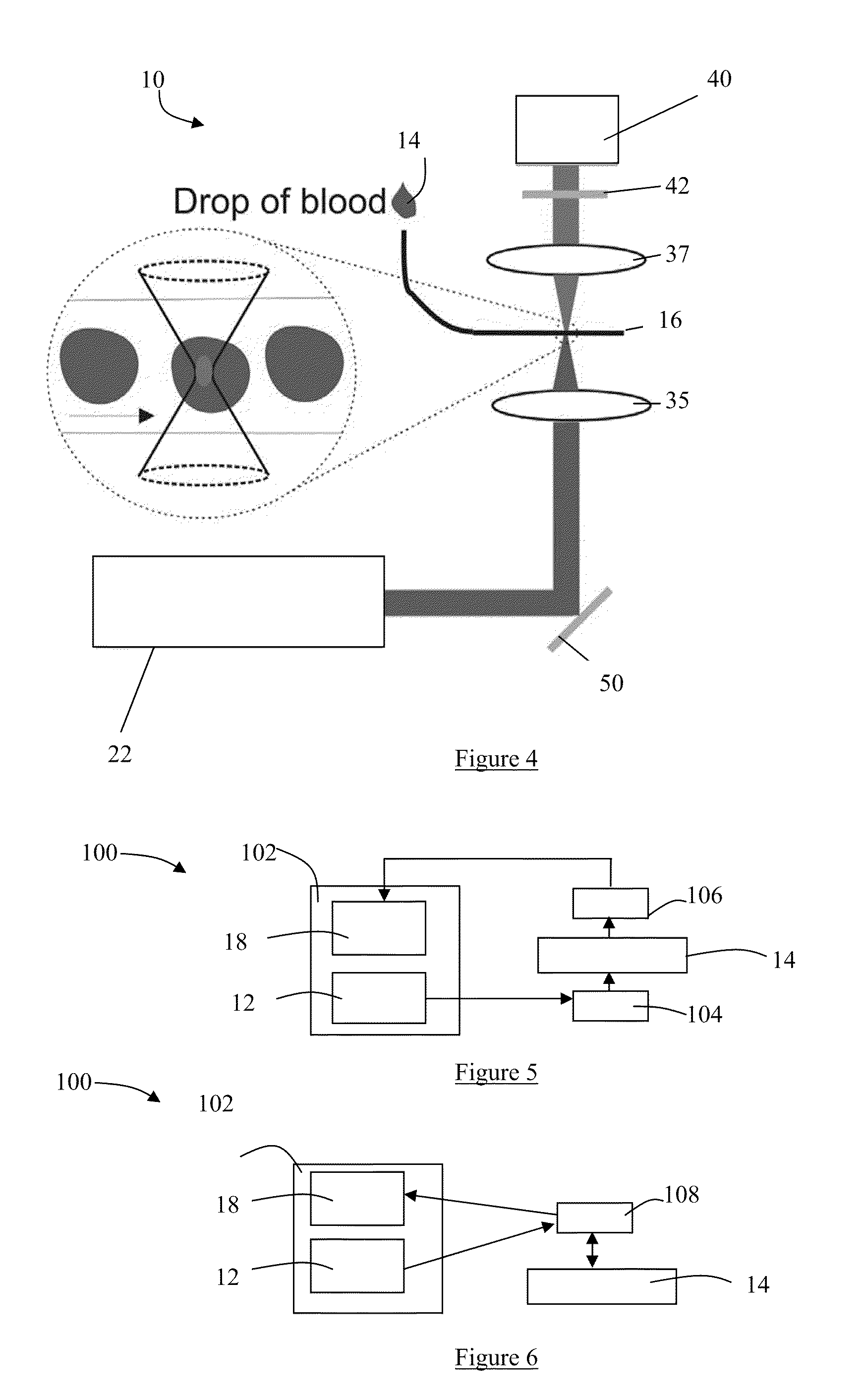Haemozoin detection
a technology of haemozoin and detection method, which is applied in the field of detection of haemozoin, can solve the problems of unreliable clinical diagnosis of malaria, time-consuming process for identifying parasites by light microscopy, and fever, and achieves the effect of reducing the risk of malaria, and improving the detection efficiency
- Summary
- Abstract
- Description
- Claims
- Application Information
AI Technical Summary
Benefits of technology
Problems solved by technology
Method used
Image
Examples
example
[0066]Multiphoton imaging of haemozoin in red blood cells: Images of haemozoin in red blood cells were obtained using the system and method of the first embodiment described above and illustrated in FIG. 3. The light source was a Mira OPO (Coherent, Santa Clara, Calif., USA) which delivered pulses of 150 fs. Scanning was performed using VM2000 moving magnet scanning mirrors (GSI Lumonics, Moorpark, Calif., USA). The excitation and collection objectives were a 63×0.9NA water immersion lens with a 2 mm working distance and a 20×0.75NA water immersion lens with a 0.61 mm working distance, respectively (Carl Zeiss, Toronto, Canada). H7422P-40 photomultiplier tubes (Hamamatsu Photonics, Bridgewater, N.J., USA) were used for photon detection. The light was spectrally filtered using a 400 / 20 for THG and a 600 / 25 for 2PAF (Chroma, Rockingham, Vt., USA). The analog-to-digital conversion of the signal from the PMT was done using a 16 bits DAQ (National Instrument, Austin, Tex., USA).
[0067]Gie...
PUM
 Login to View More
Login to View More Abstract
Description
Claims
Application Information
 Login to View More
Login to View More - R&D
- Intellectual Property
- Life Sciences
- Materials
- Tech Scout
- Unparalleled Data Quality
- Higher Quality Content
- 60% Fewer Hallucinations
Browse by: Latest US Patents, China's latest patents, Technical Efficacy Thesaurus, Application Domain, Technology Topic, Popular Technical Reports.
© 2025 PatSnap. All rights reserved.Legal|Privacy policy|Modern Slavery Act Transparency Statement|Sitemap|About US| Contact US: help@patsnap.com



